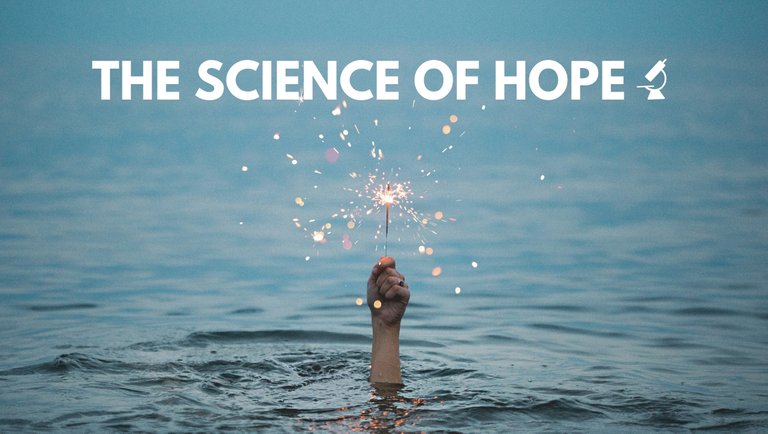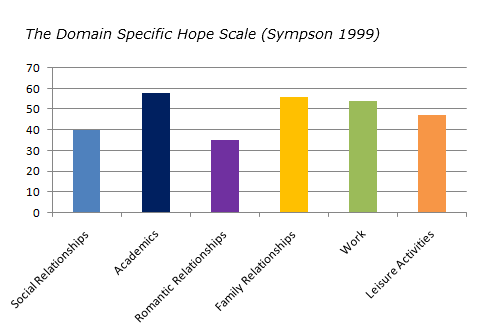
As a doctor, I have traveled and worked in various, distant destinations in the world. Once or twice, I have found myself in the midst of a humanitarian crisis - an earthquake zone, a collapsed school, a flooded country.
As I reflect back on some of the hardest moments of my life in medicine, surrounded by destruction and poverty, I have realized that on each unique occasion, I palpated something very special - an indescribable, universal hope in places I did not think it was possible to have.
From the spinal victims of the Haiti earthquake - left paralyzed in the collapsing rubble, to the teenagers with advanced bone tumors in Cambodia - still believing in cure, to the young and enthusiastic surgeons of Ethiopia - determined for a better future for their patients, a weaving pattern emerged of hope in uncertain times, a centrally bound thread that seemed to bind us altogether. Indeed, so powerful was this connection that I once described hope as the most valuable currency in the world, for it kept us alive and richer than money itself, and could be traded for beautiful, priceless memories as we got older.
But hope is not limited to the sphere of health, it is present in every facet of life. The recent verve and ignition of a new and hopeful brand of democratic politics has consolidated this concept that hope is an addictive, adrenaline-fueled chemical, that once injected into our veins, allows us to believe that seemingly insurmountable obstacles can be overcome, that certain losses can be reversed and won, that mountains can be conquered. The epic rises of inspirational politicians with their mantra of hope over hate, hope over fear, hope above all else, has united people of all backgrounds, ages, and races, to a common belief that anything is possible. This united chanting of hope orchestrated by rousing politicians echoes the same hope I felt in so many impoverished countries in the world, where the people remained hopeful of a better future in much bleaker circumstances.
This concept of hope inspired me to research our knowledge of this invisible, beautiful drug - in order to understand its scientific qualities, its indications, side-effects and how it can be measured. Hope, it seems, was investigated and studied quite extensively in the late twentieth century. A commonly cited theory of hope(1), subdivides this drug into four categories: goals, pathways, agencies, and barriers.
A goal is defined as the uncertain endpoint, an outcome one wishes to achieve but the direction to achieve the goal is unclear. The pathway is the route we decide to navigate to achieve our goals and our ability to roadmap our way to the finish line. Agency is our desire, our motivation to follow our routes, forcing our way to the end point and barriers are the blockades along the way and how we perceive them, reacting positively or negatively.
For example, the goal of the Cambodian teenager, who has an advanced bone tumor, sets their goal as a cure from the disease but with great uncertainty on how this can be achieved given the limited treatment options in the country. Perhaps the pathway they will navigate is through Khmer traditional medicine, believing in this roadmap as they turn away from Western medical advice, in the hope of avoiding an amputation. Their motivation and agency may begin to wane, once the blockades of traditional treatment failure become apparent and the tumor continues to grow before a new journey and map is drawn out. They return to western medicine, often in the latter throws of their disease, still hopeful but the blockades now almost inevitably insurmountable.
Individual hope can allegedly be measured, through a number of different tools based on questionnaires and scales. The Adult Dispositional Hope Scale is a 12 question survey, with each question scored on an 8 point scale, eventually giving a total hope score, as well as breaking down the pathway and agency subtotals. I have included a link to the 12 questions at the end of this article (2). On completing the survey myself, my scores were:
Pathway subscale: 27/32
Agency subscale: 26/32
Total hope score: 53/64
It was difficult however to find a body of literature that one could analyze my score or compare the score to other populations, although one reference cites an average hope score of 48 (3)
Another of these scales, the Domain Specific Hope Scale (Sympson 1999) is a questionnaire of hope based on six domains: social relationships, family, academics, work, leisure, and romantic relationships. It has eight questions in these domains, with a maximum score of 64 in each domain. Completing the questionnaire, I scored highest as hopeful in academics and least hopeful in romantic relationships, but again it was difficult to find a comparison group to reference my results with. My total score was 290, with an average among undergraduate students being 302 (3). My results are displayed below:

I am truly unsure of whether I completed the questionnaires correctly, or indeed, scientifically my results can be analyzed at all. Perhaps, as I get older, my hopefulness is less than that of the average undergraduate student. I have not researched the theory of hope as much as I would like to be truly analytical. However, filling in the questionnaire did not feel natural to me and it seemed uneasy trying to numerically define the molecules of hope in my body. I still do not believe this miraculous substance can be counted accurately by researchers, even if the scores and scales have been tested and validated. I believe hope is a living entity, that rises and falls, waxes and wanes can be suffocated or elevated, by your inner self, by other hopeful people around you, by inspiring healthcare staff, by uplifting politicians.
How do you scientifically quantify my hope that there will be access to safe surgery to the billions of people across the world? My hope of a long-lasting, romantic relationship with my loving, beautiful wife. My hope of a better, more just society with less poverty and more equality. My hope for good outcomes for all my patients. My unrealistic hope of this post being read to the very end shared even once!
I still believe hope is the most valuable currency in the world, and I still feel I am the richest.
References:
- Hypothesis: There is Hope. In C.R. Snyder (Eds.), Handbook of Hope Theory, Measures and Applications (pp.3–21). San Diego: Academic Press.Snyder, C.R. (2000).
- ADULT HOPE SCALE (AHS) - Snyder, C. R., Harris, C., Anderson, J. R., Holleran, S. A., Irving, L. M., Sigmon, S. T., et al. (1991). The will and the ways: Development and validation of an individual differences measure of hope. Journal of Personality and Social Psychology, 60, 570–585 (Link)
- Diagnosing for Strengths: On Measuring Hope Building Blocks. In C.R. Snyder (Eds.). Handbook of Hope Theory, Measures and Applications (pp.57–85) San Diego: Academic Press. Lopez, S.J., Ciarlelli, R., Coffman, L., Stone, M., & Wyatt, L. (2000).
Hello,
We have contacted you on Twitter to verify the authorship of your Steemit blog but we have received no response yet. We would be grateful if you could respond to us via Twitter, please.
Please note I am a volunteer that works to ensure that plagiarised content does not get rewarded. I have no way to remove any content from steemit.com.
Thank you
Hi! I am a robot. I just upvoted you! I found similar content that readers might be interested in:
http://www.saqibnoor.com/2017/06/11/the-science-of-hope/
Thank you for your attention.Apologies in advance for the spam. This is an automated comment to reduce the voting power of @fulltimegeek, a flat earth retard who is flagging reputable users like @themadcurator, @themarkymark and myself because he's a whiny little bitch who is throwing a hissy fit.Please support these users and follow @themadcurator and @themarkymark.
Congratulations @saqibnoor! You have completed the following achievement on the Steem blockchain and have been rewarded with new badge(s) :
Click here to view your Board
If you no longer want to receive notifications, reply to this comment with the word
STOPDo not miss the last post from @steemitboard:
I expected more feedbacks on your post..not just robots..
that was valuable..
I myself see a superpower in me in everyday life and that's an extreme hope piercing into any obstacle... and that's why your post took my attention..
thank you
Thanks bitpost, I agree, with hope and belief in yourself anything is possible!
Thank you for your attention.Apologies in advance for the spam. This is an automated comment to reduce the voting power of @fulltimegeek, a flat earth retard who is flagging reputable users like @themadcurator, @themarkymark and myself because he's a whiny little bitch who is throwing a hissy fit.Please support these users and follow @themadcurator and @themarkymark.